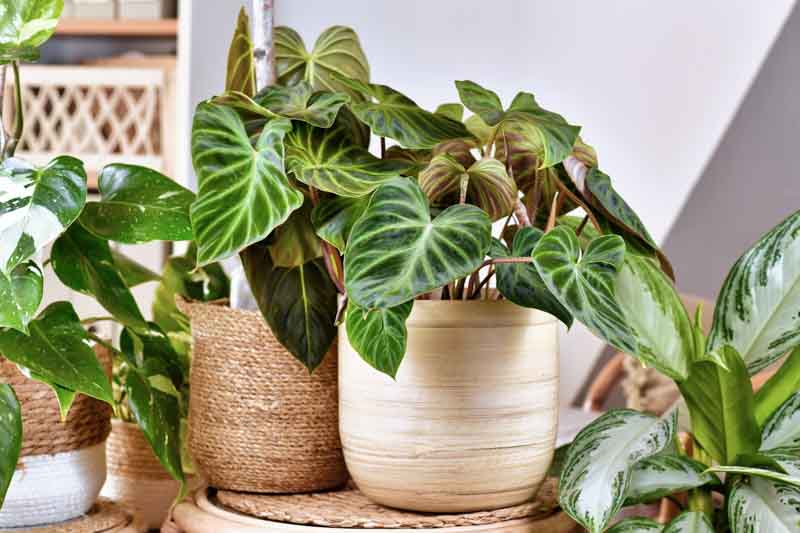Philodendron
Philodendrons, a diverse genus native to the tropical Americas, are celebrated for their easy care and stunning variety, making them a staple in indoor and outdoor gardens worldwide. These plants, belonging to the Araceae family, thrive in the warm, humid environments of rainforests, adapting well to less tropical conditions found in homes and offices.
Popular varieties: Popular Philodendrons include the vibrant Pink Princess with its striking variegated leaves, the elegant Philodendron ‘Birkin’ known for its unique patterned foliage, the colorful Philodendron ‘Brazil’, and the stunning Philodendron erubescens, among many others, each celebrated for its distinctive beauty and ease of care.
Growth Habit: Philodendrons exhibit two main growth habits: climbing or trailing varieties like Philodendron micans, which are perfect for hanging baskets or climbing supports, and self-heading types such as Philodendron xanadu, which grow in a more bush-like form. This adaptability allows them to fit into various garden designs and indoor settings.
Foliage: The foliage of Philodendrons is their most striking feature, offering a range of shapes, sizes, and colors. From glossy, deep green leaves to variegated patterns, their leaves add a lush, vibrant touch to the surroundings.
Hardiness: It varies among species, with most thriving in USDA zones 10 to 12 if planted outdoors. Indoors, they prefer warm temperatures and indirect light, avoiding the extremes of direct sunlight and cold drafts.
Uses: Uses of Philodendrons extend beyond their ornamental value. They are excellent houseplants, often utilized in interior design to bring a sense of the outdoors inside, creating calming, green spaces. In offices, they contribute to a more pleasant and productive environment.
Benefits: The benefits of incorporating Philodendrons into indoor spaces are manifold. They are known for their air-purifying qualities, removing toxins such as formaldehyde from the air. Additionally, their presence has been linked to improved mood, reduced stress levels, and increased focus, making them not just a visual delight but also a boon to well-being.
Toxicity: Philodendrons are toxic to humans and pets if ingested.

